
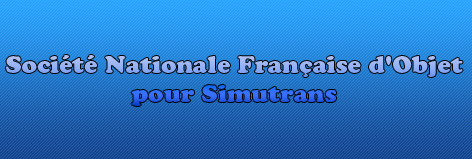




Networks of train/monorails/maglevs are often complicated and need signals to work well, otherwise trains would create jams.
Once the path is calculated until the next stop, a train reserves a track block until the next station or the next signal, no other train can reserve an already reserved block. Reserved blocks can be highlighted with the keyboard shortcut “b” :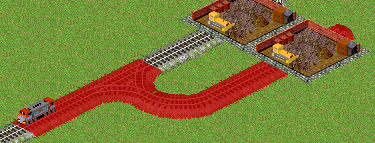 Even if no signal separate reserved and non reserved track, a train can reserve the non reserved track.
Even if no signal separate reserved and non reserved track, a train can reserve the non reserved track.
Stations act like signals, so several trains can use the same way even if there's no signals but there are stations :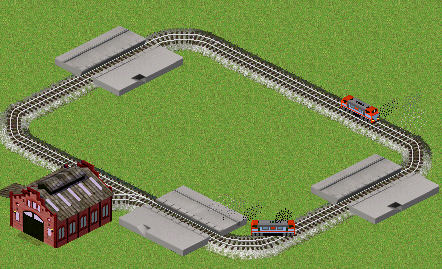
Most of the signals have three orientations : in the both directions and in only one the two directions. Click one, two or three times when building a signal to change its orientation. An oriented signal will prevent trains from passing throw it in the wrong direction.
This signal is the most useful, it cuts a track in several blocks so several trains can be on the same way, the main structure of a network is composed of simple signals. It's mostly used oriented in one direction to make one direction ways; it's essential for a complicated network.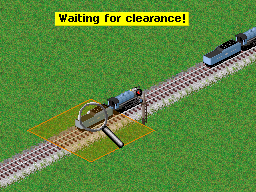 A train stops at the signal if the block ahead is not free. Once the block between the first signal and the following one is free, the train may go :
A train stops at the signal if the block ahead is not free. Once the block between the first signal and the following one is free, the train may go :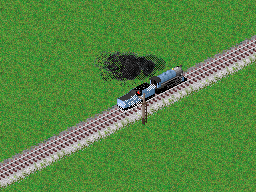
The presignal immitates the behaviour of the next signal (seems not to work with choose signals), so when a train arrives to a presignal, it must reserve the block between the presignal and the next one and the block after the second signal.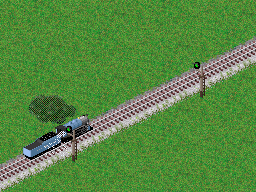 The train proceeds only if the two next blocks are free.
The train proceeds only if the two next blocks are free.
In some situations a train has to pass on a crossing only if it won't stuck it.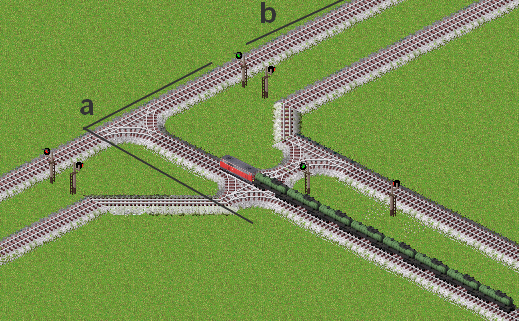 There, if the b block is taken, the train will stop in the a block and stuck the crossing, leading to a jam. With the presignal, the both blocks must be free to allow the train to proceed so it won't stuck the crossing.
There, if the b block is taken, the train will stop in the a block and stuck the crossing, leading to a jam. With the presignal, the both blocks must be free to allow the train to proceed so it won't stuck the crossing.
 A train has to wait for its platform to be free to enter a station but thanks to a choose signal it may use another platform of the same station if its platform isn't free :
A train has to wait for its platform to be free to enter a station but thanks to a choose signal it may use another platform of the same station if its platform isn't free :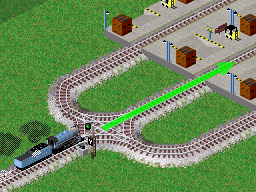 When the platform is free : no problem.
When the platform is free : no problem.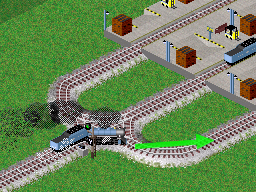 If the platform is taken, the train will use another one.
If the platform is taken, the train will use another one.
In some stations the choose signal can make trains go in wrong platforms, end of choose signals can be used, trains can't pass end of choose signals to enter a station. The possible platforms for a train are limited : This train can use only some platforms, its choice is limited by an end of choose signal :
This train can use only some platforms, its choice is limited by an end of choose signal :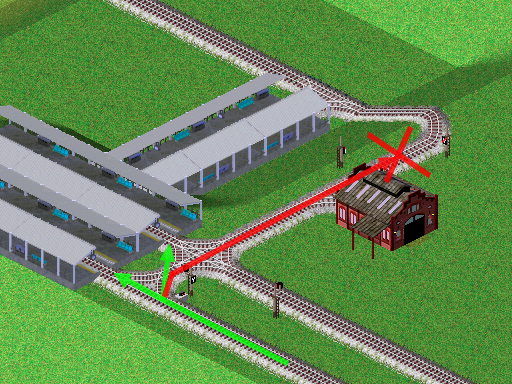
 As written above, stations act like signals but in some cases it leads to a jam. A train can't enter a reserved block even if there are stations if there is a long block signal, the train must reserve the block until the next signal despite the stations between them.
As written above, stations act like signals but in some cases it leads to a jam. A train can't enter a reserved block even if there are stations if there is a long block signal, the train must reserve the block until the next signal despite the stations between them.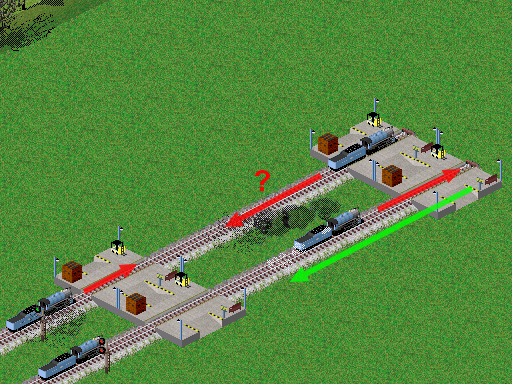 The train doesn't proceed if another train is already in the block despite the stations between them.
The train doesn't proceed if another train is already in the block despite the stations between them.
This signal is useful when there is, on a circular line, a way where trains have to go and come back to the circular line :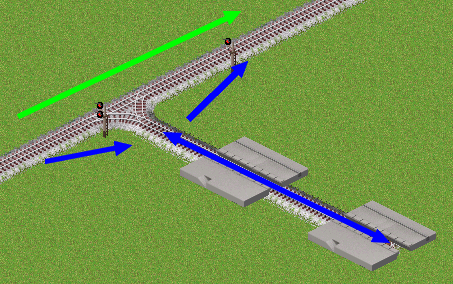
This signal doesn't cut a way in blocks, it just prevent trains to go in the wrong direction.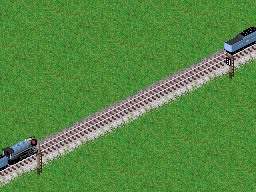 In this screenshot the train at the bottom doesn't proceed because the one way signal at the top right doesn't cut the way in blocks, the block the train must reserve stretches from the first signal to the signal after the one way signal.
In this screenshot the train at the bottom doesn't proceed because the one way signal at the top right doesn't cut the way in blocks, the block the train must reserve stretches from the first signal to the signal after the one way signal.
This signal can be used in train changers where the direction must be defined without cutting the way in blocks in the middle of the changer, this would lead to traffic jams …